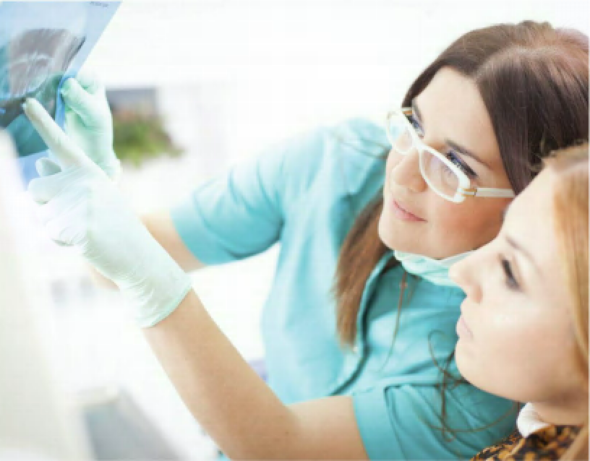 Eid al-Fitr (“Breaking of the Fast”) is a Muslim three-day holiday, signifying the end of fasting during the month of Ramadan. Ramadan is the ninth month of the Islamic calendar during which the Qur’an was revealed. In this month, it is obligatory for all able Muslims to partake in a month-long fast where they are to abstain from food and drink (yes, even water!) during daylight hours. Fasting during the month of Ramadan is one of the Five Pillars of Islam, along with a declaration of faith, five daily prayers, giving to charity and a pilgrimage to Mecca. The holy month is also used as an opportunity to build one’s spirituality. At night, Muslims line up to offer a number of optional prayers called “Taraweeh” while listening to and reflecting on the recitation of the Qur’an.
Eid al-Fitr (“Breaking of the Fast”) is a Muslim three-day holiday, signifying the end of fasting during the month of Ramadan. Ramadan is the ninth month of the Islamic calendar during which the Qur’an was revealed. In this month, it is obligatory for all able Muslims to partake in a month-long fast where they are to abstain from food and drink (yes, even water!) during daylight hours. Fasting during the month of Ramadan is one of the Five Pillars of Islam, along with a declaration of faith, five daily prayers, giving to charity and a pilgrimage to Mecca. The holy month is also used as an opportunity to build one’s spirituality. At night, Muslims line up to offer a number of optional prayers called “Taraweeh” while listening to and reflecting on the recitation of the Qur’an.



 In 2002, the United Nations General Assembly declared May 21 World Day for Cultural Diversity for Dialogue and Development. In honor of this day, ASDA’s Council on Professional Issues asked dental students to discuss the importance of diversity and how their chapter celebrates members’ unique differences.
In 2002, the United Nations General Assembly declared May 21 World Day for Cultural Diversity for Dialogue and Development. In honor of this day, ASDA’s Council on Professional Issues asked dental students to discuss the importance of diversity and how their chapter celebrates members’ unique differences.
 Although the number of women in higher education is growing, they have yet to achieve equity. This gap is prominent in dentistry, where men outnumber women in school and in practice. In the 1960s, 10 percent of students in medical, law and MBA programs were women. In the 1990s, the number of graduate student women began to outnumber men.
Although the number of women in higher education is growing, they have yet to achieve equity. This gap is prominent in dentistry, where men outnumber women in school and in practice. In the 1960s, 10 percent of students in medical, law and MBA programs were women. In the 1990s, the number of graduate student women began to outnumber men. Dear Hidden Figures,
Dear Hidden Figures,
 This article originally appeared as a cover story in the
This article originally appeared as a cover story in the 
 As a high school senior, I had an opportunity to interview for a collegiate scholarship, during which I discussed my aspirations for a career in dentistry with an all-male panel of judges. I remember being asked, “Why don’t you want to be a dental hygienist or an assistant? Aren’t those the typical roles in dentistry for a female?”
As a high school senior, I had an opportunity to interview for a collegiate scholarship, during which I discussed my aspirations for a career in dentistry with an all-male panel of judges. I remember being asked, “Why don’t you want to be a dental hygienist or an assistant? Aren’t those the typical roles in dentistry for a female?”
 As fourth year dental students, we completed our clinical outreach requirements at the University of Bergen (UiB) in Norway through an international exchange program. We treated patients in the clinic, made many wonderful friendships and traveled the beautiful country of Norway. The combination of clinical practice, learning and working in an international health care setting led us to one of the most rewarding experiences in dental school. We strongly recommend that students take advantage of any opportunity to participate in dentistry in a novel setting as a way to expand your perspective and potentially practice dentistry abroad. The opportunity to explore various techniques and materials, and to improve patient communication skills, helped us to grow as health practitioners. Most importantly, we became more independent. For us, participating in this program changed our lives and our careers.
As fourth year dental students, we completed our clinical outreach requirements at the University of Bergen (UiB) in Norway through an international exchange program. We treated patients in the clinic, made many wonderful friendships and traveled the beautiful country of Norway. The combination of clinical practice, learning and working in an international health care setting led us to one of the most rewarding experiences in dental school. We strongly recommend that students take advantage of any opportunity to participate in dentistry in a novel setting as a way to expand your perspective and potentially practice dentistry abroad. The opportunity to explore various techniques and materials, and to improve patient communication skills, helped us to grow as health practitioners. Most importantly, we became more independent. For us, participating in this program changed our lives and our careers.